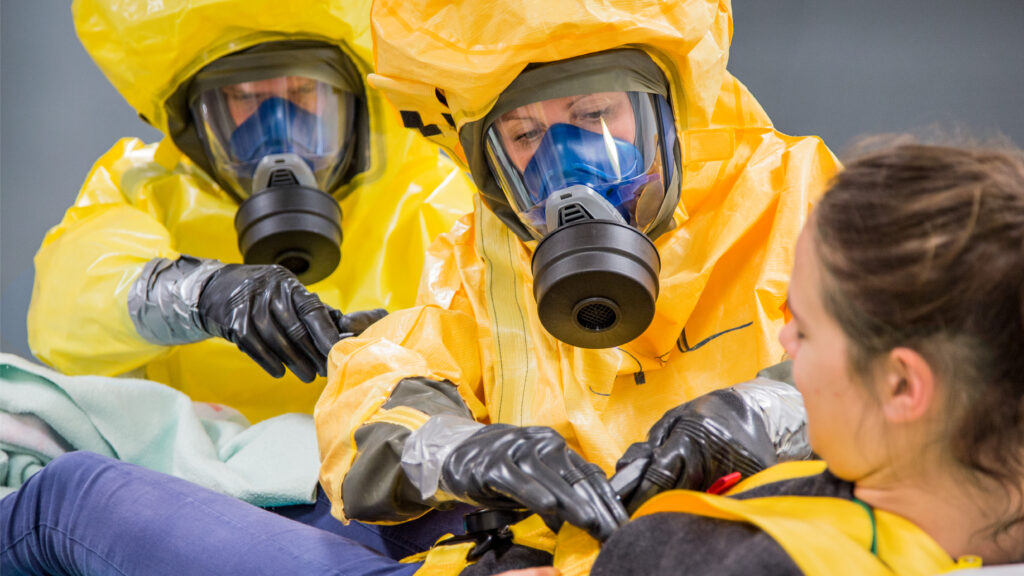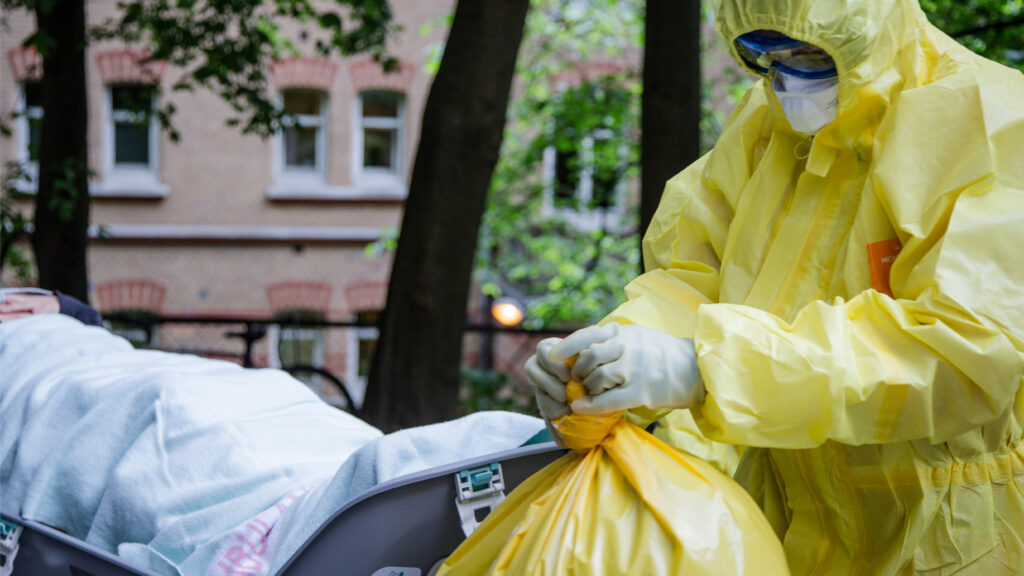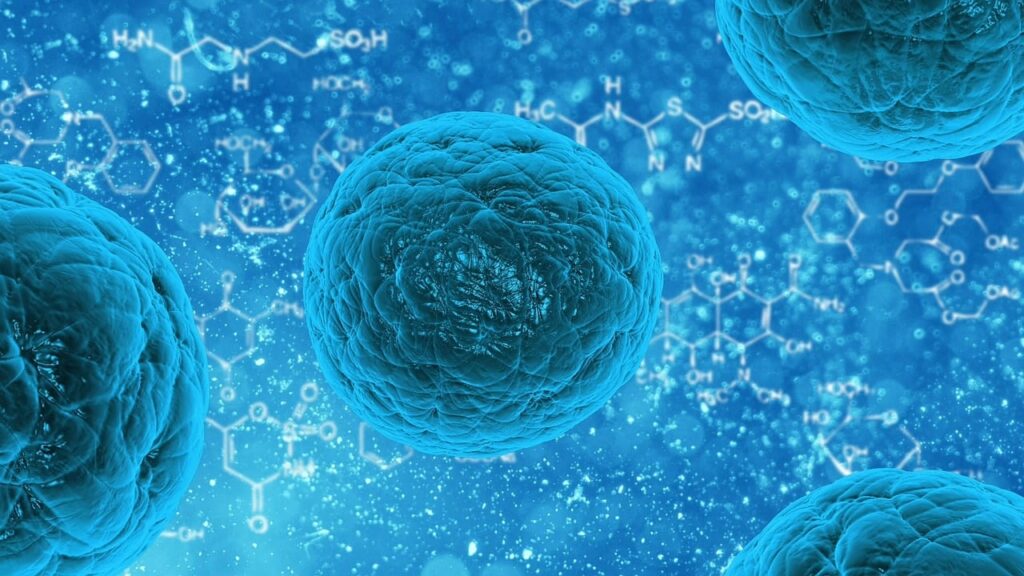CBRN – Chemical, Biological, Radiological, and Nuclear
CBRN has been gaining more attention lately in the media due to the war in Ukraine and domestic terrorism. Today’s modern society is under constant threat of being exposed to dangerous CBRN agents. This blog will dive deep into the topic of CBRN to answer the questions: What does CBRN stand for? What are the types of CBRN agents? How dangerous are they for society? What do to in case of a CBRN event?
What does CBRN stand for?
CBRN stands for Chemical, Biological, Radiological, and Nuclear. The acronym can be used to describe CBRN materials, threats, events, incidents, or agents.
What are the types of CBRN agents?
CBRN agents are hazardous materials, either naturally occurring or artificially produced. While there might be similarities between them, they are different in their chemical and physical nature, origin, and properties.
Many CBRN agents are invisible which makes them difficult to detect. These types of agents have the ability to create mass casualties and vastly disrupt the society by causing illness or even death, depending on the agent and the exposure circumstances. Therefore, it is crucial for a national response network to be prepared and respond quickly in an organized fashion.
It is important that the public is made aware of these kinds of agents by educating its citizens on how to react when there is a suspected or confirmed hazard. This significantly increases the chance of survival.

Key properties of CBRN agents
There are four key properties of CBRN agents that influence the overall approach to treating its adverse health effects.
Toxicity
Toxicity describes the ability of a substance to cause harm or death. The term is commonly used for chemical agents, while the terms ‘mortality’, ‘lethality’ and ‘morbidity’ are more commonly used for biological agents.
In the case of nuclear/radiological agents the terms used to describe toxicity are ‘deterministic effects’ that refer to immediate effects of the agent (damage of radiation), and ‘stochastic effects’ that appear later (e.g. cancer).
Latency
Latency is the interval between the exposure to a CBRN agent and the first sign of illness or disease. Factors influencing the interval range from the type of agent, concentration, the amount of exposure and the individual’s response to the agent.
Persistency
Persistency is the characteristic of a CBRN agent to cause harm for a prolonged period after release and reflects its ability to remain in the environment. It is dependent on a couple of factors like the physical and chemical stability of the agent and its propensity to degrade in certain environmental conditions.
Transmissibility
Transmissibility is used to describe whether an agent can be transmitted from one individual to another. The most common way of transmission is via cross-contamination and direct physical contact, but in the case of biological agents it can also include direct transmission with no contact (via air) or indirect (e.g. insect vectors).
Types of CBRN agents are
- Chemical agents
- Biological agents
- Radiological agents/nuclear reactions

Chemical Agents
What are chemical agents?
A chemical agent is a toxic chemical compound that can have hazardous effect on human health. Some agents have been developed by military organizations for warfare, while agents like chlorine, hydrogen cyanide are used for industrial, agricultural, or medical purposes. Some chemicals can be made from everyday items such as household cleaners.
There is always a risk that certain chemicals can be used as a weapon and intentionally released as in the case of a terrorist attack. There are guidelines for mitigating such chemical emergencies, i.e., the CDC guidelines are for emergency preparedness and response.
Exposure to chemical agents via inhalation, dermal absorption, or ingestion can lead to death.
Types of chemical agents
The main types and categories of chemical agents according to the CDC are:
- Biotoxins—poisons that come from plants or animals
- Blister agents —chemicals that cause burns and blisters on the skin upon contact and if inhaled damage the respiratory tract
- Blood agents—poisons which inhibit transfer of oxygen in the blood causing convulsion and respiratory failure
- Caustics (acids)—chemicals that burn or corrode people’s skin, eyes, and mucus membranes (lining of the nose, mouth, throat, and lungs) on contact
- Choking/lung/pulmonary agents—chemicals that cause severe irritation or swelling of the respiratory tract (lining of the nose and throat, lungs)
- Incapacitating agents—drugs that make people unable to think clearly or that cause an altered state of consciousness. They act on the central nervous system to cause psychomimetic effects (delusions and hallucinations)
- Long-acting anticoagulants—poisons that prevent blood from clotting properly, which can lead to uncontrolled bleeding
- Metals—agents that consist of metallic poisons
- Nerve agents—highly poisonous chemicals which interfere with the transmission of the acetylcholine neurotransmitter causing muscle spasms, secretions, respiratory failure and unconsciousness
- Riot control agents/tear gas—highly irritating agents normally used by law enforcement for crowd control or by individuals for protection
- Toxic alcohols—poisonous alcohols that can damage the heart, kidneys, and nervous system
- Vomiting agents—chemicals that cause nausea and vomiting
Biological agents
What are biological agents?
Biological agents are microorganisms (viruses, bacteria, and fungi). They can occur naturally or be genetically modified. They can have serious effects on people, livestock, and crops.
Toxins are also a class of biological agents and include naturally occurring poisonous chemicals produced by animals, plants, and microorganisms. Like viruses, bacteria, and fungi, toxins can also be genetically modified.
Typical biological agents used in attacks can cause sickness and disease by infection, usually days after the exposure.
Some biological agents can be transmitted by direct physical contact between humans or through contaminated material or surfaces. Others can be spread via air from person to person while some agents require an insect vector (e.g., yellow fever virus carried by mosquitos).
Types of biological agents
There are three main types of biological agents:
- Bacteria – can cause diseases such as plague and anthrax
- Viruses – can cause diseases such as Ebola, Smallpox, and the flu
- Toxins – examples are ricin, aflatoxin, botulism
A wide range of biological agents have been used as weapons by military programmes, including plague, anthrax, glanders, brucellosis, Q-fever, smallpox etc. Similar to chemical agents, the severity of the illness and the risk of death will depend on multiple factors including: the type of agent, the level of exposure, the physical state of the infected and the medical treatment given after the exposure.

Radiological agents and Nuclear reaction
What are radiological agents and nuclear reaction?
Radiological agents are radioactive materials that are a by-product from a nuclear plant or a nuclear weapon.
They are hazardous in two ways:
- Emission of highly penetrating radiation that leads to external irradiation of a person
- Tissue and organ irradiation when the agents are inhaled, absorbed through the skin or ingested in contaminated food or water
To clarify, the radiation which is hazardous for human health is ionizing radiation. Ionizing radiation is the energy given off from radioactive materials and it is strong enough to damage cells in the body and cause serious illness or even death.
Nuclear reaction produces energy and radiation.
Types of radiation
Radioactive materials emit different types of ionizing radiation based on their physical and chemical properties. The three main types of radiation are:
- Alpha radiation – it emits particles that consist of protons and neutrons. These particles have a short range and low penetration meaning they cannot penetrate human skin. However alpha emitting materials can still be harmful if ingested or inhaled.
- Beta radiation – it emits particles that consist of negatively charged electrons. These particles may travel several feet through the air and are moderately penetrating meaning they can penetrate the top skin layer.
- Gamma radiation and X-rays are highly penetrating forms of electromagnetic radiation that can penetrate many centimetres into human tissue.
High doses of radiation can cause acute and life-threatening injuries (“deterministic effects”). Low doses of radiation exposure can lead to increased risk of cancer (“stochastic effects”).

What to do in case of CBRN event?
CBRN agents can be extremely dangerous for human health and therefore must be contained and isolated as soon as possible. In most cases, emergency services and first responders are the first to be in contact with a person contaminated by a CBRN agent. Before they can identify the agent, they need to isolate and transport the patient as quickly as possible to a safe environment.
The risk of exposure to the agent increases during transportation. This is where an isolation transportation unit like the EpiShuttle becomes a crucial piece of equipment. The EpiShuttle does not protect against all types of CBRN occurrences. Accordingly please consult with medical professionals before usage.
Medical isolation transportation units can keep first responders safe and protected, especially when the unit is completely sealed and underpressurized. It also needs to have special CBRN filters to filter out the contaminated air circling inside the unit. In case the patient needs care and treatment during transport, the isolation unit must allow access to the patient’s body and the ability for intubation, ventilation and IV-line insertion.
The EpiShuttle is currently being used in the case of CBRN events all over the world including Finland, Norway, the UK, and Germany. An example of this has been the transport of Alexey Navalny with suspected chemical poisoning to protect the healthcare staff and pilots from exposure to the Novichok nerve agent.